Opinion & Analysis
Will leaving Titleist hurt Rory McIlroy’s game?
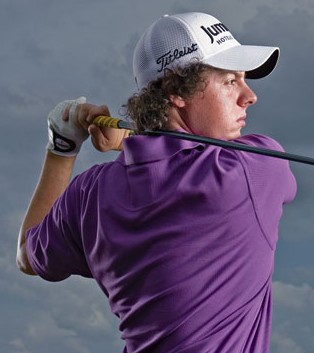
Golf fans learned two things about Rory McIlroy’s future today: he will no longer endorse Titleist or FootJoy products as of Dec. 31, 2012, and another OEM is going to pay him an outrageous amount of money to play its equipment.
It has been widely speculated that McIlroy has already entered into a deal with Nike Golf to the tune of 10 years, $250 million. Nike is neither confirming nor denying the rumor, meaning McIlroy’s deal with Nike is either the worst-kept secret in golf history or one of the biggest rumor-mill hoaxes of all time. But here’s what golf fans do know — McIlroy will be forced to shelve at least a few pieces of Titleist equipment he used to win the 2012 PGA Championship at Kiawah Island by a record margin of eight shots.
Whatever company signs Rory McIlroy will do its best to accommodate his equipment preferences, but equipment changes, especially for a player of McIlroy’s caliber, can be as much about sound, feel and confidence as they are performance. That’s why six-time major champion Nick Faldo said on Tuesday’s “Morning Drive” on the Golf Channel that McIlroy’s decision to change equipment was “dangerous.”
“I’ve changed clubs and changed equipment, and every manufacturer will say, ‘We can copy your clubs; we can tweak the golf ball so it fits you,’” Faldo said. “But there’s feel and sound as well, and there’s confidence. You can’t put a real value on that. It’s priceless.”
Based on the equipment McIlroy is playing now (Click here to see what was in his bag at the 2012 PGA Championship), we’ve made a list of the five biggest hurdles McIlroy will face as he migrates from Titleist equipment.
Click here for more discussion in the “Tour/Pre-release equipment” forum.
No. 5 – A new driver head/shaft combination
Like snowflakes, no two golf shafts are exactly the same. Even shafts of the same model from the same manufacturer with the same listed specifications can have minuscule differences than top ball strikers like McIlroy can notice.
McIlroy switched to a new shaft, a Mitsubishi Diamana Prototype 70X, to go along with Titleist’s latest 913 D3 driver that he used to win the 2012 PGA Championship. But the move from his old driver with his old shaft were subtle tweaks to the look, feel and ball flight he was used to with his Titleist driver setup.
Going to a different driver will mean McIlroy will be playing something that looks and feels different. It will also likely perform different, which could mean a different shaft. If that new shaft doesn’t feel the same while McIlroy is unloading it at 120 mph, it will be problematic.
No. 4 – Working the ball with new fairway woods
McIlroy’s last tournament victory came at the BMW Championship, where he used Titleist’s new 913Fd fairway woods (a 13.5-degree and 18-degree model) to fend off some of golf’s best players: Lee Westwood, Phil Mickelson, Tiger Woods, Robert Garrigus, Dustin Johnson, Adam Scott, Vijay Singh and Ryan Moore, who all finished in the top 10 at Crooked Stick that week.
While McIlroy migrated to the 913Fd fairway woods quickly after their launch on tour, he didn’t have much success with Titleist’s previous model, the 910Fd fairway woods. He opted to stay with an older model, Titleist’s 906F2, saying he felt more confident and comfortable hitting a fade or draw on command with the older ones.
Because of McIlroy’s prodigious length, he frequently opts to hit 3 wood or 5 wood off the tee for more control or better position. This makes them vital clubs for him, especially in major championships where hitting fairways is at a premium. Changing fairway woods means changing that confidence level, at least for a little while. And at McIlroy’s level, a lack of confidence over even a single tee shot can be the difference between winning and losing.
No. 3 – Changing wedges
After the driver, the first clubs that Tiger Woods put in his bag during his gradual transition from Titleist to Nike were a set of Nike forged muscleback irons. Rickie Fowler made a similar transition in 2012, changing over from a set of Titleist musclebacks to Cobras, which he used to win his first PGA Tour event.
Woods and Fowler had success switching models of muscleback irons because they are easiest clubs for OEMs to replicate for tour players. It would seem to make sense that OEMs could do the same thing with wedges for its new staff players, but that’s not the case.
Unlike irons, wedges are used in a variety of different playing positions and players use different parts of the sole to play different shots. This places a premium on the shaping, size and width of the sole of a tour player’s wedge. For this reason, Tiger held out for years before trading in his Vokey wedges and Fowler is still using his Vokeys while under contract with Cobra-Puma.
McIlroy has been playing Vokey wedges his entire professional career. While new wedges from a different manufacturer might look the same and even feel the same, perfecting things such bounce angle, sole width, camber and leading edge shape can take a long time.
No. 2 – Using an insert putter
Putters are one of the most often changed pieces of equipment on tour. McIlroy has been no exception – he was a long-time user of a Scotty Cameron Newport Fastback Select prototype before changing to a Scotty Cameron Studio Select Newport GSS prototype that he used to win the 2011 U.S. Open.
If McIlroy goes to Nike, he will be expected to play a Method putter, which employs grooves in the face that Nike engineers say get the ball rolling faster after contact. More roll is good, but it can be another thing that takes getting used to.
Woods, who has been using a Nike Method putter consistently since his return to competitive golf at the 2010 Masters, has never found the success on the greens with a grooved putter that he enjoyed while using a Scotty Cameron. Woods said his Method putter took some adjustment because it had a different feel off the face and “rolled farther.”
Any company that signs McIlroy would be doing him a huge favor by giving him a grace period on putter use, as the putter will likely be the most difficult club in the bag for him to switch out.
No. 1 – Switching from the Titleist Pro V1X
The golf ball is the only piece of equipment (other than shoes or gloves) that a player uses on every shot on the course. That makes the golf ball the most important part of an equipment switch for tour players, since it has to work with every one of their clubs.
Titleist leads on tour in golf ball usage. While its competitors have become very good at making golf balls, McIlroy can be assured that his next ball will not perform exactly like his old one. There are construction and material differences, all related to patents, which make it impossible.
McIlroy’s next ball will likely spin a little more or a little less, and perform differently in the wind than his Pro V1X. Even if the ball performs better, better is not always foolproof, because better means different.
———————————————————————————
Some players are better suited to changing equipment than others. It is possible that McIlroy has already tested all of his future company’s new gear, and has worked with the company to create a set of equipment and a golf ball that is to his liking. If this is the case, the opportunity to make more money and the potential for more exposure are no-brainers for McIlroy. But the level of play that golf fans saw from McIlroy at the 2012 PGA Championship made it clear that it will be hard for Rory to find equipment that will make him a noticeably better golfer. He will, however, become noticeable richer and noticeable more famous.
It will be interesting to see how much of a grace period McIlroy is given when it comes to changing over to his new equipment. Will he be treated like Tiger Woods was before the scandal, whose contract stated that he could play any other manufacturer’s equipment if he thought it was better, or will big money from a company like Nike mean an immediate 14-club deal including a change to one of their golf balls?
Golf fans should remember that golfers of Rory’s caliber would have success with just about any set of equipment that was given to them. But at the highest level, it’s the small things that make a difference, and that’s exactly what McIlroy’s new equipment deal will do — change some small things.
Click here for more discussion in the “Tour/Pre-release equipment” forum.
- LIKE1
- LEGIT0
- WOW0
- LOL0
- IDHT0
- FLOP0
- OB0
- SHANK1
19th Hole
Vincenzi’s 2024 Zurich Classic of New Orleans betting preview

The PGA TOUR heads to New Orleans to play the 2023 Zurich Classic of New Orleans. In a welcome change from the usual stroke play, the Zurich Classic is a team event. On Thursday and Saturday, the teams play best ball, and on Friday and Sunday the teams play alternate shot.
TPC Louisiana is a par 72 that measures 7,425 yards. The course features some short par 4s and plenty of water and bunkers, which makes for a lot of exciting risk/reward scenarios for competitors. Pete Dye designed the course in 2004 specifically for the Zurich Classic, although the event didn’t make its debut until 2007 because of Hurricane Katrina.
Coming off of the Masters and a signature event in consecutive weeks, the field this week is a step down, and understandably so. Many of the world’s top players will be using this time to rest after a busy stretch.
However, there are some interesting teams this season with some stars making surprise appearances in the team event. Some notable teams include Patrick Cantlay and Xander Schauffele, Rory McIlroy and Shane Lowry, Collin Morikawa and Kurt Kitayama, Will Zalatoris and Sahith Theegala as well as a few Canadian teams, Nick Taylor and Adam Hadwin and Taylor Pendrith and Corey Conners.
Past Winners at TPC Louisiana
- 2023: Riley/Hardy (-30)
- 2022: Cantlay/Schauffele (-29)
- 2021: Leishman/Smith (-20)
- 2019: Palmer/Rahm (-26)
- 2018: Horschel/Piercy (-22)
- 2017: Blixt/Smith (-27)
2024 Zurich Classic of New Orleans Picks
Tom Hoge/Maverick McNealy +2500 (DraftKings)
Tom Hoge is coming off of a solid T18 finish at the RBC Heritage and finished T13 at last year’s Zurich Classic alongside Harris English.
This season, Hoge is having one of his best years on Tour in terms of Strokes Gained: Approach. In his last 24 rounds, the only player to top him on the category is Scottie Scheffler. Hoge has been solid on Pete Dye designs, ranking 28th in the field over his past 36 rounds.
McNealy is also having a solid season. He’s finished T6 at the Waste Management Phoenix Open and T9 at the PLAYERS Championship. He recently started working with world renowned swing coach, Butch Harmon, and its seemingly paid dividends in 2024.
Keith Mitchell/Joel Dahmen +4000 (DraftKings)
Keith Mitchell is having a fantastic season, finishing in the top-20 of five of his past seven starts on Tour. Most recently, Mitchell finished T14 at the Valero Texas Open and gained a whopping 6.0 strokes off the tee. He finished 6th at last year’s Zurich Classic.
Joel Dahmen is having a resurgent year and has been dialed in with his irons. He also has a T11 finish at the PLAYERS Championship at TPC Sawgrass which is another Pete Dye track. With Mitchell’s length and Dahmen’s ability to put it close with his short irons, the Mitchell/Dahmen combination will be dangerous this week.
Taylor Moore/Matt NeSmith +6500 (DraftKings)
Taylor Moore has quickly developed into one of the more consistent players on Tour. He’s finished in the top-20 in three of his past four starts, including a very impressive showing at The Masters, finishing T20. He’s also finished T4 at this event in consecutive seasons alongside Matt NeSmith.
NeSmith isn’t having a great 2024, but has seemed to elevate his game in this format. He finished T26 at Pete Dye’s TPC Sawgrass, which gives the 30-year-old something to build off of. NeSmith is also a great putter on Bermudagrass, which could help elevate Moore’s ball striking prowess.
- LIKE8
- LEGIT3
- WOW1
- LOL1
- IDHT0
- FLOP3
- OB1
- SHANK1
19th Hole
Vincenzi’s 2024 LIV Adelaide betting preview: Cam Smith ready for big week down under

After having four of the top twelve players on the leaderboard at The Masters, LIV Golf is set for their fifth event of the season: LIV Adelaide.
For both LIV fans and golf fans in Australia, LIV Adelaide is one of the most anticipated events of the year. With 35,000 people expected to attend each day of the tournament, the Grange Golf Club will be crawling with fans who are passionate about the sport of golf. The 12th hole, better known as “the watering hole”, is sure to have the rowdiest of the fans cheering after a long day of drinking some Leishman Lager.
The Grange Golf Club is a par-72 that measures 6,946 yards. The course features minimal resistance, as golfers went extremely low last season. In 2023, Talor Gooch shot consecutive rounds of 62 on Thursday and Friday, giving himself a gigantic cushion heading into championship Sunday. Things got tight for a while, but in the end, the Oklahoma State product was able to hold off The Crushers’ Anirban Lahiri for a three-shot victory.
The Four Aces won the team competition with the Range Goats finishing second.
*All Images Courtesy of LIV Golf*
Past Winners at LIV Adelaide
- 2023: Talor Gooch (-19)
Stat Leaders Through LIV Miami
Green in Regulation
- Richard Bland
- Jon Rahm
- Paul Casey
Fairways Hit
- Abraham Ancer
- Graeme McDowell
- Henrik Stenson
Driving Distance
- Bryson DeChambeau
- Joaquin Niemann
- Dean Burmester
Putting
- Cameron Smith
- Louis Oosthuizen
- Matt Jones
2024 LIV Adelaide Picks
Cameron Smith +1400 (DraftKings)
When I pulled up the odds for LIV Adelaide, I was more than a little surprised to see multiple golfers listed ahead of Cameron Smith on the betting board. A few starts ago, Cam finished runner-up at LIV Hong Kong, which is a golf course that absolutely suits his eye. Augusta National in another course that Smith could roll out of bed and finish in the top-ten at, and he did so two weeks ago at The Masters, finishing T6.
At Augusta, he gained strokes on the field on approach, off the tee (slightly), and of course, around the green and putting. Smith able to get in the mix at a major championship despite coming into the week feeling under the weather tells me that his game is once again rounding into form.
The Grange Golf Club is another course that undoubtedly suits the Australian. Smith is obviously incredibly comfortable playing in front of the Aussie faithful and has won three Australian PGA Championship’s. The course is very short and will allow Smith to play conservative off the tee, mitigating his most glaring weakness. With birdies available all over the golf course, there’s a chance the event turns into a putting contest, and there’s no one on the planet I’d rather have in one of those than Cam Smith.

Louis Oosthuizen +2200 (DraftKings)
Louis Oosthuizen has simply been one of the best players on LIV in the 2024 seas0n. The South African has finished in the top-10 on the LIV leaderboard in three of his five starts, with his best coming in Jeddah, where he finished T2. Perhaps more impressively, Oosthuizen finished T7 at LIV Miami, which took place at Doral’s “Blue Monster”, an absolutely massive golf course. Given that Louis is on the shorter side in terms of distance off the tee, his ability to play well in Miami shows how dialed he is with the irons this season.
In addition to the LIV finishes, Oosthuizen won back-to-back starts on the DP World Tour in December at the Alfred Dunhill Championship and the Mauritus Open. He also finished runner-up at the end of February in the International Series Oman. The 41-year-old has been one of the most consistent performers of 2024, regardless of tour.
For the season, Louis ranks 4th on LIV in birdies made, T9 in fairways hit and first in putting. He ranks 32nd in driving distance, but that won’t be an issue at this short course. Last season, he finished T11 at the event, but was in decent position going into the final round but fell back after shooting 70 while the rest of the field went low. This season, Oosthuizen comes into the event in peak form, and the course should be a perfect fit for his smooth swing and hot putter this week.

- LIKE12
- LEGIT3
- WOW1
- LOL1
- IDHT0
- FLOP1
- OB1
- SHANK1
Opinion & Analysis
The Wedge Guy: What really makes a wedge work? Part 1

Of all the clubs in our bags, wedges are almost always the simplest in construction and, therefore, the easiest to analyze what might make one work differently from another if you know what to look for.
Wedges are a lot less mysterious than drivers, of course, as the major brands are working with a lot of “pixie dust” inside these modern marvels. That’s carrying over more to irons now, with so many new models featuring internal multi-material technologies, and almost all of them having a “badge” or insert in the back to allow more complex graphics while hiding the actual distribution of mass.
But when it comes to wedges, most on the market today are still single pieces of molded steel, either cast or forged into that shape. So, if you look closely at where the mass is distributed, it’s pretty clear how that wedge is going to perform.
To start, because of their wider soles, the majority of the mass of almost any wedge is along the bottom third of the clubhead. So, the best wedge shots are always those hit between the 2nd and 5th grooves so that more mass is directly behind that impact. Elite tour professionals practice incessantly to learn to do that consistently, wearing out a spot about the size of a penny right there. If impact moves higher than that, the face is dramatically thinner, so smash factor is compromised significantly, which reduces the overall distance the ball will fly.
Every one of us, tour players included, knows that maddening shot that we feel a bit high on the face and it doesn’t go anywhere, it’s not your fault.
If your wedges show a wear pattern the size of a silver dollar, and centered above the 3rd or 4th groove, you are not getting anywhere near the same performance from shot to shot. Robot testing proves impact even two to three grooves higher in the face can cause distance loss of up to 35 to 55 feet with modern ‘tour design’ wedges.
In addition, as impact moves above the center of mass, the golf club principle of gear effect causes the ball to fly higher with less spin. Think of modern drivers for a minute. The “holy grail” of driving is high launch and low spin, and the driver engineers are pulling out all stops to get the mass as low in the clubhead as possible to optimize this combination.
Where is all the mass in your wedges? Low. So, disregarding the higher lofts, wedges “want” to launch the ball high with low spin – exactly the opposite of what good wedge play requires penetrating ball flight with high spin.
While almost all major brand wedges have begun putting a tiny bit more thickness in the top portion of the clubhead, conventional and modern ‘tour design’ wedges perform pretty much like they always have. Elite players learn to hit those crisp, spinny penetrating wedge shots by spending lots of practice time learning to consistently make contact low in the face.
So, what about grooves and face texture?
Grooves on any club can only do so much, and no one has any material advantage here. The USGA tightly defines what we manufacturers can do with grooves and face texture, and modern manufacturing techniques allow all of us to push those limits ever closer. And we all do. End of story.
Then there’s the topic of bounce and grinds, the most complex and confusing part of the wedge formula. Many top brands offer a complex array of sole configurations, all of them admittedly specialized to a particular kind of lie or turf conditions, and/or a particular divot pattern.
But if you don’t play the same turf all the time, and make the same size divot on every swing, how would you ever figure this out?
The only way is to take any wedge you are considering and play it a few rounds, hitting all the shots you face and observing the results. There’s simply no other way.
So, hopefully this will inspire a lively conversation in our comments section, and I’ll chime in to answer any questions you might have.
And next week, I’ll dive into the rest of the wedge formula. Yes, shafts, grips and specifications are essential, too.
- LIKE33
- LEGIT7
- WOW1
- LOL1
- IDHT2
- FLOP3
- OB1
- SHANK3
-

 19th Hole2 weeks ago
19th Hole2 weeks agoDave Portnoy places monstrous outright bet for the 2024 Masters
-

 19th Hole3 days ago
19th Hole3 days agoJustin Thomas on the equipment choice of Scottie Scheffler that he thinks is ‘weird’
-

 19th Hole2 weeks ago
19th Hole2 weeks agoTiger Woods arrives at 2024 Masters equipped with a putter that may surprise you
-

 19th Hole3 days ago
19th Hole3 days ago‘Absolutely crazy’ – Major champ lays into Patrick Cantlay over his decision on final hole of RBC Heritage
-

 19th Hole2 weeks ago
19th Hole2 weeks agoTwo star names reportedly blanked Jon Rahm all week at the Masters
-

 19th Hole1 week ago
19th Hole1 week agoReport: LIV Golf identifies latest star name they hope to sign to breakaway tour
-

 19th Hole1 week ago
19th Hole1 week agoNeal Shipley presser ends in awkward fashion after reporter claims Tiger handed him note on 8th fairway
-

 19th Hole1 week ago
19th Hole1 week agoBrandel Chamblee has ‘no doubt’ who started the McIlroy/LIV rumor and why

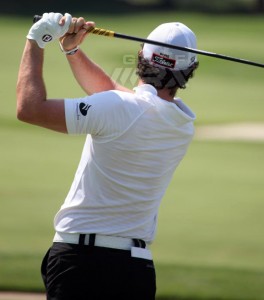

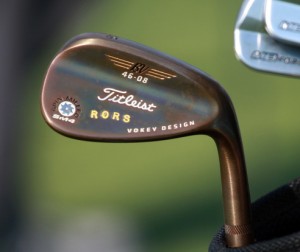
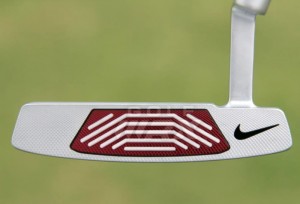

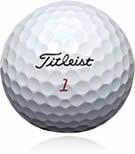
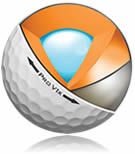


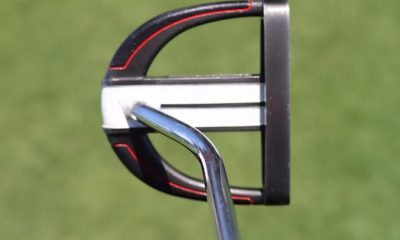

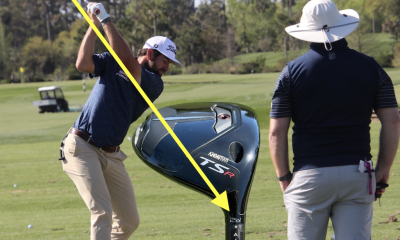

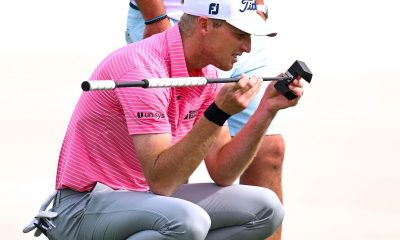

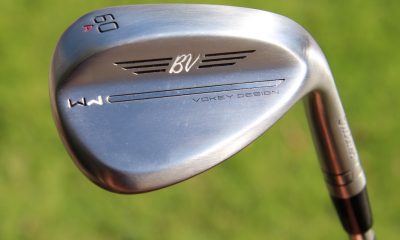

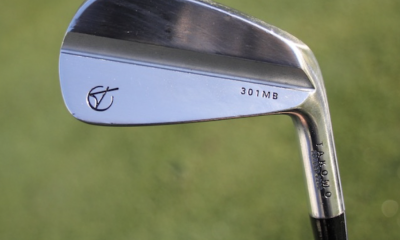

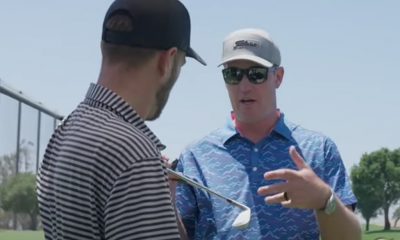














Bill Murray
Sep 11, 2014 at 1:19 pm
I think it all worked out
Pingback: Why New Clubs and Balls Make 2013 a Big Question Mark for Rory McIlroy | Centre for Golfing - The Clubhouse
Blopar
Dec 2, 2012 at 11:44 pm
Greedy, greedy, greedy. Bad move Rors. Titleist made you somebody when you were nobody. Now you stick it to them. Money can’t buy you love or happiness and all the Nike money in the world can’t buy you the quality of Titleist, Vokey, and Cameron. Hope your new clubs suck and you chop with them!
GolfNut
Jan 3, 2013 at 4:43 pm
@Blopar, I disagree. Titlist did not make him, Oakley did not make him. I have neither seen swinging a club for him in any tournament, He made what he is. I would for sure take the money an run as it is business and nothing but business.
Albert T
Nov 30, 2012 at 2:19 pm
Makes you think what Titleist counter was? There’s no way it would be $250MM… but they didn’t exactly spend the last 3-4 years designing clubs for RM for him to just walk out and leave.
Sean D
Nov 3, 2012 at 1:19 pm
I agree with Dave 100%. It would be a terrible busines decision not to take that kind of dough and run. It’s a business after all, and someone with his talent is still going to contend and win even with my clubs.
Dave
Oct 31, 2012 at 1:28 pm
@Mark Bennett I’m not sure why it’s a shame he “needs’ to chase the money. If you were offered $250MM over 10 yrs and had an OEM as huge as Nike say (and probably demonstrate) that they can and will make clubs that fit you, why would you NOT switch? It’s financial freedom for the rest of you life, your family’s lives, your grandkids lives, etc. Obviously, Rors is already rich and would be anyway, but this is deal is in another realm of rich… it’s what i like to call “F U Money”.
In fact, I’d go so far as to say that it would be fiscally irresponsible of him NOT to take that deal.
JP
Oct 31, 2012 at 10:22 am
Interesting article. I think it’s common for for player endorsement contracts to exclude drivers and putters as pros change these all the time on tour, so it’s easy to envisage Rory sticking with his tried & tested 913 & Scotty for a while. However, most Nike staffers seem happy to play their full line so it could be swooshes all the way for RM.
Mark Bennett
Oct 31, 2012 at 6:06 am
Good article Zak. It’s a shame he needs to chase the money. It will be interesting to see if he can keep improving with the new equipment.
phase3golf
Oct 31, 2012 at 2:30 am
He is too good and it wont matter what he switches to. They will paint his Titleist balls with a swoosh and away he goes!